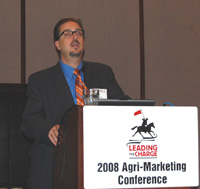And that would be the amount of cellulosic ethanol required under the energy bill passed by Congress last year. “The Renewable Fuels Standard does require that we have over 21 billion gallons of renewable fuels created from biomass over the next ten years,” |
Wednesday, April 30, 2008
Biofuels GREAT for high performance cars!
Sunday, April 20, 2008
No Bigger Energy Waste
World Bank calls on oil producers to cut $50bn gas fire THE world's oil producers are wasting more than $50 billion a year of natural gas by burning it off in flares — and adding significantly to the world's greenhouse gas emissions in the process. The bank said the amount was equivalent to 27 per cent of the entire US consumption of natural gas, and 5.5 per cent of global gas output. Had it been sold in the US at 2006 prices, it would have been worth $US40 billion ($A53 billion at 2006 exchange rates). "In Africa alone, about 40 billion cubic metres of gas are burned every year, which, if put to use, could generate half the electricity needed in that continent."
|
The Case For Clean Fuel From Coal and Municpal Waste
|
Saturday, April 19, 2008
Air Force Committing Lots of Land For Fuel Developers
USAF to provide facilities for private synthetic fuel development Commercial synthetic fuel production and research into reducing the carbon dioxide output of the synthesis process could take place at the US Air Force's Malmstrom AFB in Montana under the USAF's Enhanced Use Lease programme.
|
Air Force Flies Another "Bird" on Coal
the USAF plans to meet half its domestic requirements with US-produced coal-to-liquid synthetic fuel by 2016. |
University Creates Fuel Technology for Commercialization
CleanTech Biofuels Inc. said Tuesday it entered into a licensing agreement with HFTA of Livermore, Calif., to license technology developed by scientists at the University of California-Berkeley (UCB). HFTA was formed by the UCB scientists who developed technology using nitric acid to hydrolyze biomass. University City, Mo.-based CleanTech Biofuels Inc. (OTCBB: CLTH) is a development stage company working on technologies to convert cellulosic material in municipal solid waste, green waste, and other cellulosic waste materials into fermentable sugars for the production of fuel-grade ethanol. |
Government Supports Saving Money on Biomass
|
About Me
- Energy Oracle
- New York, New York, United States
- I am a consultant in the alternative fuels industry focusing on waste-to-fuel, cellulosic biomass and coal conversion technology.
 KL Process Design Group was the first company to get a small-scale cellulosic ethanol plant on-line using waste-wood material to produce about 1.5 million gallons of ethanol a year. The company is currently providing teams in the American LeMans Series with an 85 percent cellulosic ethanol racing fuel.
KL Process Design Group was the first company to get a small-scale cellulosic ethanol plant on-line using waste-wood material to produce about 1.5 million gallons of ethanol a year. The company is currently providing teams in the American LeMans Series with an 85 percent cellulosic ethanol racing fuel. 





